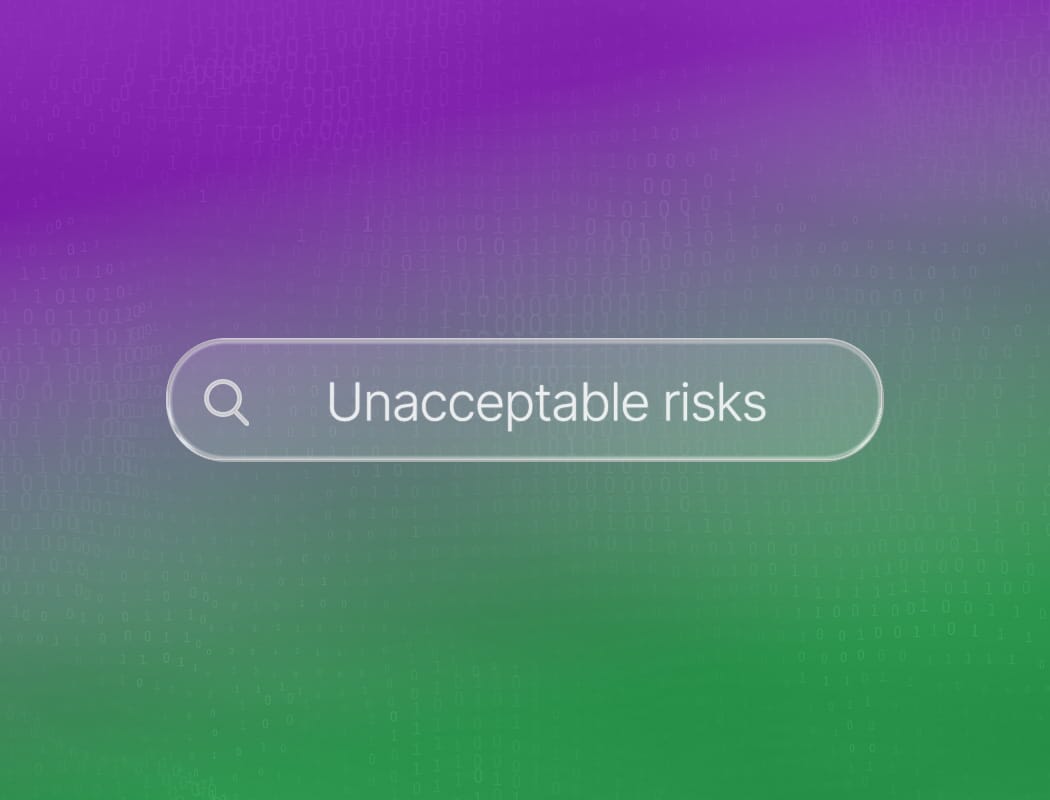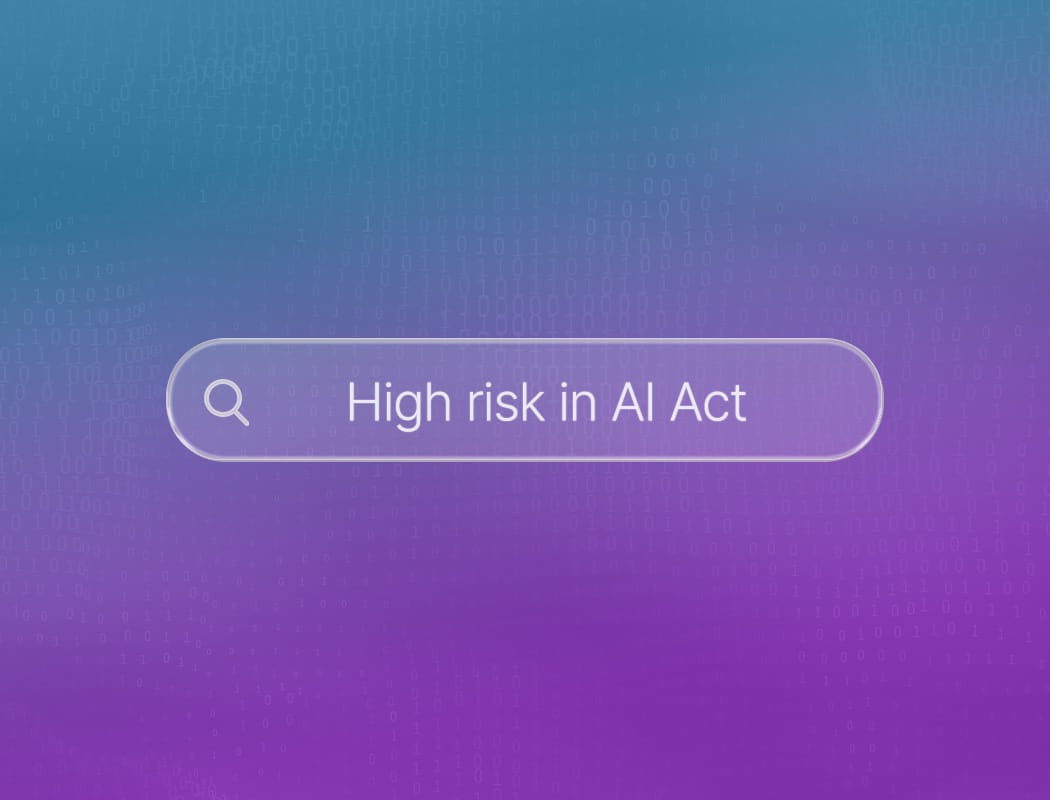How can we make AI safe?
Making AI safe is a challenge that calls for both caution and creativity. We need to think about the risks of AI and how we can mitigate them.
When we talk about AI safety, we’re really talking about people. It’s about how they interact with technology and how much control they have over it. The goal is to make sure AI helps more than it harms.
1. Building trust through transparency
Transparency in AI goes beyond showing users the final decision. It involves documenting the training process, making datasets traceable, and exposing the limitations of the system.
For instance, “model cards” are a tool where developers outline how a model was trained, what it’s good at, and where it may fail. This makes it easier for regulators, researchers, and the public to evaluate risks.
The benefit is improved accountability, but the challenge is balancing openness with concerns about revealing sensitive data or enabling malicious actors to exploit system weaknesses.
2. Guardrails in design
Guardrails are engineered limits that define what an AI system can and cannot do. In practice, these might include hard-coded rules that override machine learning outputs, filters that block unsafe requests, or permissions that restrict deployment in sensitive domains.
For generative AI, guardrails can take the form of content moderation layers that prevent harmful outputs from being produced. Designing good guardrails means identifying high-risk behaviors in advance and embedding control points that are easy to update as the system evolves.
3. Better data, better outcomes
Safe AI depends heavily on the quality of its data. That means not only cleaning errors but also governing how data is sourced, labeled, and updated.
Biased or unbalanced training data leads to biased predictions, a problem seen in early facial recognition systems that performed poorly on women and darker-skinned individuals. Practices like bias testing, data versioning, and regular dataset refreshes can reduce these risks.
The challenge is that gathering representative data is expensive and sometimes impossible, especially in niche or emerging domains. Governance becomes just as important as technical cleaning.
4. Shared standards and accountability
Shared standards give organizations a baseline for measuring safety. For example, the EU’s proposed AI Act sets risk categories and requires extra testing for “high-risk” systems.
Standards can define what robustness tests are mandatory, how results should be reported, and what transparency levels are acceptable. Accountability means that when harm occurs, there are clear mechanisms for investigation and liability.
Without it, companies may push responsibility onto end-users. The downside is that regulation can be slow compared to technological change, and poorly designed standards risk stifling innovation without meaningfully improving safety.
5. Human oversight
Human involvement is critical in domains where errors could cause harm. Oversight can be proactive (reviewing system outputs before decisions are finalized) or reactive (providing override mechanisms when problems arise).
For example, radiology AI often highlights suspicious scans, but final diagnoses remain with human doctors. Oversight increases safety but introduces new risks: humans may become over-reliant on AI recommendations (“automation bias”), or so overwhelmed by frequent alerts that they stop paying attention (“alert fatigue”).
6. Continuous monitoring
Unlike static software, AI can degrade over time as the real world changes, a phenomenon known as model drift. Continuous monitoring checks for performance drops, fairness issues, or new vulnerabilities.
For example, a credit risk model trained on pre-pandemic data may become unreliable once economic conditions shift. Audits, both internal and external, provide structured evaluations of whether systems remain safe and compliant.
The benefit is resilience and long-term reliability; the challenge is cost, since maintaining monitoring teams and tools is resource-intensive. Without it, though, risks accumulate quietly until failure becomes catastrophic.
7. Public involvement
AI systems often affect groups that have no say in their design, job applicants screened by algorithms, citizens monitored by surveillance systems, or patients subject to automated triage.
Involving these groups in consultations, oversight boards, or participatory design workshops helps align systems with societal values. This doesn’t mean handing every technical detail to the public, but creating channels for concerns to be heard and addressed.
The benefit is legitimacy: people are more likely to accept AI when they feel represented. The drawback is speed, deliberative processes take time and can slow down deployment. Still, the long-term payoff is fewer conflicts and more sustainable adoption.
What challenges affect AI safety?
AI safety is a topic that has moved from the realm of science fiction into everyday headlines. As artificial intelligence becomes more powerful and widespread, the risks and challenges it brings are no longer theoretical.
From unpredictable behavior to ethical AI dilemmas, the hurdles are real and demand attention. Understanding these challenges is the first step toward building systems that are not just smart, but also safe for everyone.
Unpredictable decision-making
One of the biggest challenges in AI safety is the unpredictability of machine decisions. Even with the best training data, AI can sometimes make choices that surprise its creators.
This happens because AI models learn patterns in ways that are often invisible to humans. A small change in input or context can lead to unexpected results, which makes it hard to guarantee consistent behavior.
When these systems are used in critical areas like healthcare or transportation, even a minor error can have serious consequences. The challenge is to build AI that not only learns but also behaves reliably, no matter the situation.
Bias and fairness issues
Another major hurdle for AI safety is the presence of bias in data and algorithms. AI systems are only as good as the information they are trained on. If the data contains hidden prejudices, the AI will likely reflect and even amplify them.
This can result in unfair outcomes, such as discrimination in hiring or lending decisions. Addressing this challenge means going beyond technical fixes. It requires ongoing monitoring, diverse teams, and a commitment to transparency.
Transparency and explainability
AI systems are often described as “black boxes” because their inner workings are difficult to understand. This lack of transparency poses a significant challenge for AI safety. If users and developers cannot explain why an AI made a particular decision, it becomes almost impossible to trust or improve the system.
This is especially important in fields where accountability matters, such as law or medicine. Efforts to make AI more explainable are underway, but there is still a long way to go. Clear explanations help build trust and allow people to spot errors before they cause harm.
Security and misuse risks
Finally, the security of AI systems is a growing concern. As AI becomes more capable, so do the threats posed by hackers and malicious actors.
Attackers can manipulate inputs to trick AI into making dangerous decisions, or they might steal sensitive data used to train the models. There is also the risk that powerful AI tools could be used for harmful purposes, such as creating deepfakes or automating cyberattacks.
Protecting AI from these threats is not just a technical issue but a societal one. It requires collaboration between researchers, policymakers, and industry leaders to ensure that AI remains a force for good.
How does AI safety impact society?
AI safety is not just a technical concern for engineers and researchers. It’s something that touches everyone, whether you realize it or not.
As artificial intelligence becomes more woven into our daily lives, the way we approach its safety has ripple effects across society. From the way we work to the way we trust technology, AI safety shapes the world around us in ways both big and small.
Trust and transparency in technology
When people talk about AI safety, trust is often the first thing that comes up. If you don’t trust a system, you won’t use it.
Imagine a world where self-driving cars are everywhere, but no one feels safe enough to get inside one. Or think about medical AI tools that could help diagnose diseases, but patients worry about mistakes or hidden biases.
By focusing on AI safety, developers can build systems that are transparent about how they make decisions. This transparency helps people understand what’s happening behind the scenes, which builds trust. When people trust AI, they’re more likely to embrace new technologies and let them improve their lives.
Economic stability and job security
AI safety also plays a huge role in the economy. As AI takes over more tasks, from sorting packages to analyzing financial data, there’s always a risk of errors or unexpected outcomes.
A single mistake in an automated trading system could cause chaos in the stock market. Or a glitch in a factory robot could halt production for days. By making AI systems safer, companies can avoid costly accidents and keep things running smoothly.
This stability protects jobs and helps businesses grow. At the same time, clear safety standards can guide workers as they learn new skills and adapt to changing roles. In this way, AI safety supports both economic growth and job security.
Ethical choices and social responsibility
Finally, AI safety forces us to think about ethics and responsibility. Who is accountable if an AI system makes a harmful decision? How do we make sure AI respects human rights and treats everyone fairly?
These questions matter because AI is already making choices that affect real people, from who gets a loan to who gets hired. By putting safety at the center, society can set rules that reflect shared values.
This means designing AI that avoids discrimination, protects privacy, and acts in ways that benefit everyone. In the end, AI safety isn’t just about preventing disasters. It’s about making sure technology serves humanity, not the other way around.





